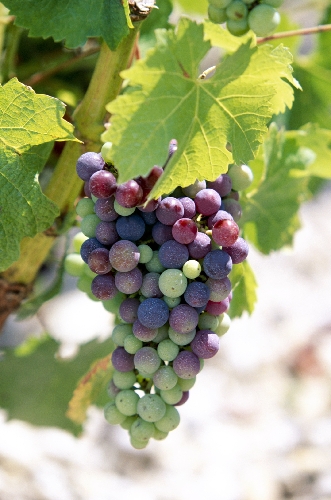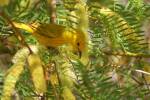Come for cactus sale, stay for burgers and knowledge
Come on out for the UNLV Cactus Sale and BBQ at 6:30 p.m. today at the University of Nevada Cooperative Extension Orchard, located at the University of Nevada, Las Vegas' Center for Urban Horticulture and Water Conservation . Besides the cactus sale there will be presentations on growing melons in the desert and on scorpions, and hamburgers and drinks. The center is located at 4734 Horse Road in North Las Vegas. The hamburgers cost $1.25.
All answers to readers' questions plus images can be found on the Xtremehorticulture of the Desert blog online.
Q. I have a 5-year-old grapevine. Each year I have an infestation of tiny white flying insects. I have tried traditional sprays with no success. What are they, and how do I get rid of them? BTW - The hummingbirds love them. The birds will cause the insects to become airborne, and then pluck them off in midair.
A. It is possible that they are either leafhoppers or whiteflies. I have seen leafhoppers more often than whiteflies on grapes. However your description fits whiteflies better than leafhoppers. Spinosad will work well on young leafhoppers but not on whiteflies.
Leafhoppers are usually darker in color, green or brown or a combination of both but jump into the air rather than fly. Both are hard to control but soap and water sprays are good when both are very young.
It is getting late now as this should have been applied in late April or early May if using soapy water. You can also use insecticidal soap which is a refined form of a homemade soap-and-water spray. The commercial insecticidal soap is in the right concentration and does not have potential problems as you might have with soaps or detergents that have skin conditioners or scents added.
Be sure to spray the undersides of the leaves which is where they are most likely found but go out and find where they are and direct the spray on the insects, not just on the plants. The insecticidal soaps have no residual, so if the insects land back on the soapy surface of the leaf it will not harm them.
The soapy water MUST come in contact with the insect or it will not work. If these are truly whiteflies then use a fruit spray that contains the words pyrethrums, permethrin, cypermethrin, pyrethroids, etc. you get the idea. It should have "ethr " in words in the ingredients and should be specific and include grapes on the label. There are lots of different kinds.
If they are leafhoppers you can try applying spinosad this time of year but it is starting to get late for this application and may not work well anymore. It should have been done in May, but try it.
Q. I have a pear tree which is about 10 years old. Up until this year, it has been pretty healthy. This spring it got a disease. I am hoping you can identify it for me from these pictures and tell me what I can do to treat it so that it won't be a problem in the future.
I thought at first it might be fire blight, but it is not with the new growth. It seems to have attacked all the places where there would have been fruit. I have inserted pictures for you and hope that these are helpful. It is not receiving any overhead spray. It is watered with a drip system.
A. This is fire blight. Frequently I see this problem pop up on fruit trees in May or June. This is a bacterial disease that is rarer than fungal diseases on plants. One way it is spread is through the flowers either by blowing wind during rainy weather or by pollinators such as honey bees.
Flowers of apple and pear come from spurs that are short shoots on older wood. If the disease enters through the flower it will spread through the older growth and into the new growth if it is present. It does not necessarily have to attack new growth.
It can be seen on older growth as well. If it is present on new growth it will show shepherds hook, of which there is a textbook picture posted on my blog. If new growth was not present then it will simply die back and demonstrate a blackened, scorched, fire appearance.
This disease is extremely virulent and must be removed as soon as possible from the tree and the growing area. Cut out the infected limb 12 inches below the visible infection. Sterilize pruning instruments with a dilution of bleach and water both before and after the cut has been made.
Put the cut limb into a plastic bag, tie the bag and immediately put it into the trash. Do not try to mulch or compost this infected limb. Oil your pruning tools after you disinfect them with bleach so they don't rust.
Wash your hands after you have finished pruning. This disease is fairly rare here because of low humidity and our isolation from orchards . It attacks European pears like Bartlett, all Asian pears and quince but does not damage Keiffer pears.
Q. This is about mesquite trees of which I have two in my front yard. Last fall I had both trees trimmed quite drastically by a recommended tree service. They are coming back very nicely except one limb is dripping what I thought was oil; a dark stain looking like oil or tar.
At first, I thought the gardeners had dripped oil over the rocks and over my lantern with their equipment. Then I looked up! I don't know what to do about this; I clean up the area as best I can and within a week, it looks like it had never been cleaned. Is this something I should worry about, or should I just keep on cleaning? Only one limb on one tree is doing this.
A. Mesquite trees can bleed quite profusely when they have been cut. This is nothing to worry about and it should stop by summer.
Out of curiosity you might just take your finger to this sap and smell it. If it has a strong yeasty smell and it attracts flies it's possible it could be a relatively minor disease problem called wetwood or slime flux.
There is really not much you can do about this disease and it should not have any long-lasting effects on the health of the plant. This is not true of this disease and a couple of other trees but on mesquite it should be no problem. This dripping is going to be unsightly.
If the liquid persists, it is possible to drill a hole at the bottom of where it is leaking and tap in a 2- or 3-inch tube into the hole so that the liquid runs down and out the tube, not down the side of the tree. Make sure all is sterile when puncturing or putting a hole or cut into plants.
Bob Morris is a horticulture expert living in Las Vegas; he is on special assignment in the Balkh Province, Afghanistan, for the University of California, Davis. Visit his blog at xtremehorticulture.blogspot.com.




























